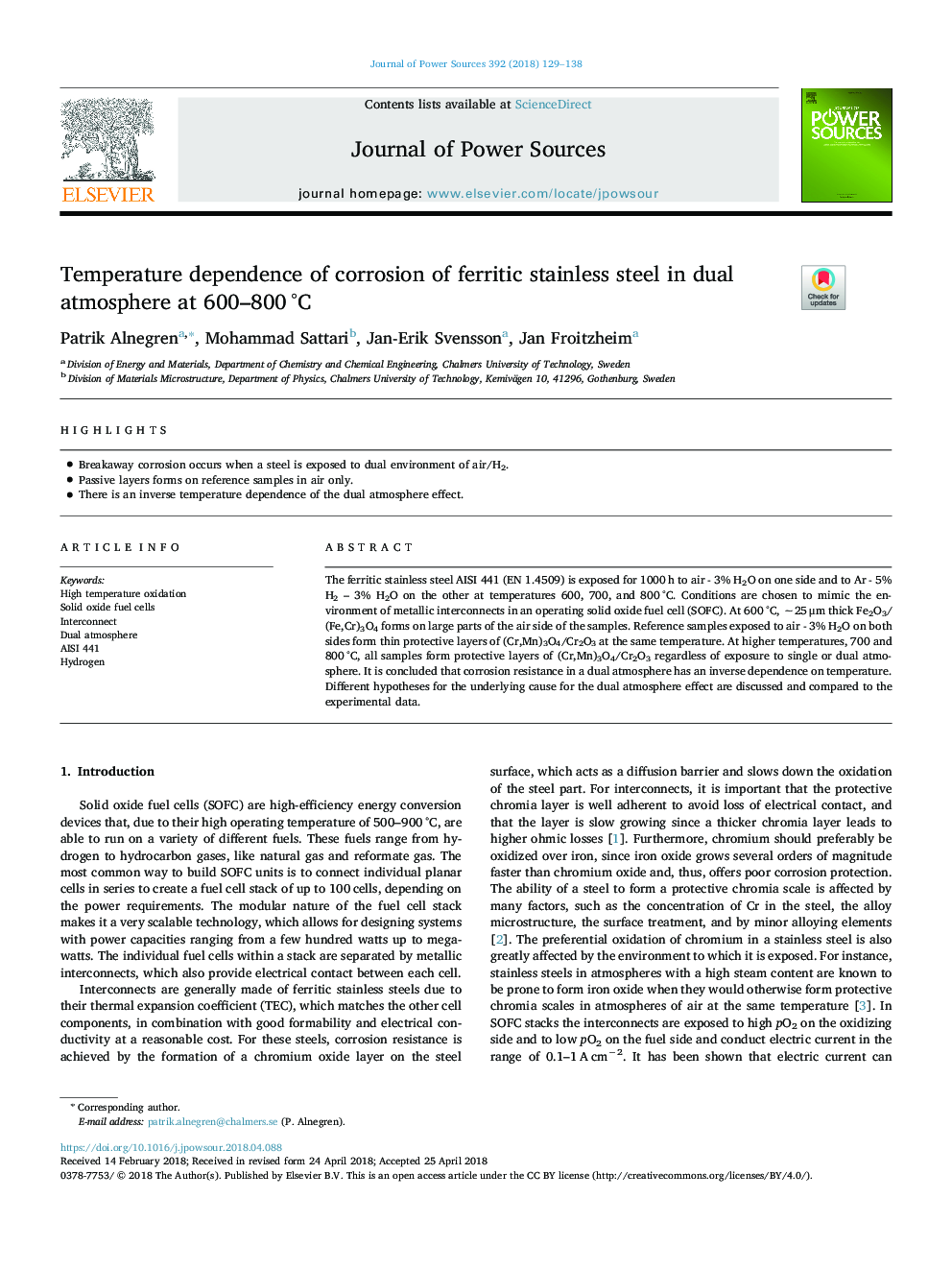| Article ID | Journal | Published Year | Pages | File Type |
|---|---|---|---|---|
| 7725110 | Journal of Power Sources | 2018 | 10 Pages |
Abstract
The ferritic stainless steel AISI 441 (EN 1.4509) is exposed for 1000â¯h to air - 3% H2O on one side and to Ar - 5% H2 - 3% H2O on the other at temperatures 600, 700, and 800â¯Â°C. Conditions are chosen to mimic the environment of metallic interconnects in an operating solid oxide fuel cell (SOFC). At 600â¯Â°C, â¼25â¯Î¼m thick Fe2O3/(Fe,Cr)3O4 forms on large parts of the air side of the samples. Reference samples exposed to air - 3% H2O on both sides form thin protective layers of (Cr,Mn)3O4/Cr2O3 at the same temperature. At higher temperatures, 700 and 800â¯Â°C, all samples form protective layers of (Cr,Mn)3O4/Cr2O3 regardless of exposure to single or dual atmosphere. It is concluded that corrosion resistance in a dual atmosphere has an inverse dependence on temperature. Different hypotheses for the underlying cause for the dual atmosphere effect are discussed and compared to the experimental data.
Related Topics
Physical Sciences and Engineering
Chemistry
Electrochemistry
Authors
Patrik Alnegren, Mohammad Sattari, Jan-Erik Svensson, Jan Froitzheim,
